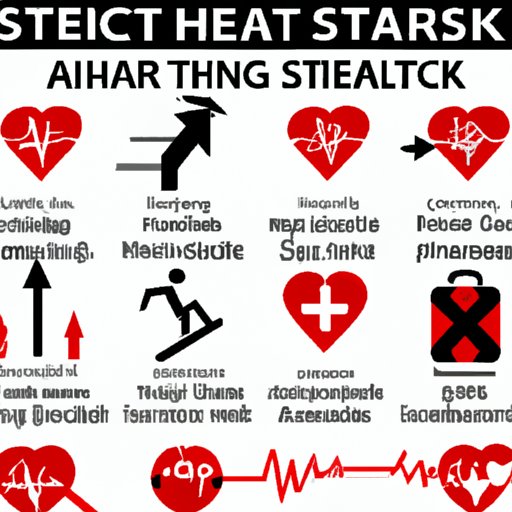
How to Stop a Heart Attack: Understanding the Warnings Signs, Adopting a Heart-Healthy Lifestyle, and Offering Emergency Tips
Heart attacks are serious and can be fatal, which is why it’s important to know how to stop a heart attack. In fact, knowing the warning signs of a heart attack could save your life or someone else’s. This article provides practical tips and information on how to stop a heart attack, adopt a heart-healthy lifestyle, and offer emergency tips. The audience of this article is everyone, regardless of age or gender, because heart attacks can happen to anyone.
Understanding the Warning Signs
A heart attack occurs when blood flow to the heart is blocked, which can cause damage to the heart muscle. Early warning signs of heart attack can include chest pain or discomfort that may feel like pressure, fullness, or a squeezing sensation, as well as discomfort or pain in one or both arms, the back, neck, jaw, or stomach. Other symptoms can be shortness of breath, lightheadedness, nausea, and sweating.
If you experience any symptoms of a heart attack, it’s important to seek immediate medical attention. Call 911 immediately, chew and swallow an aspirin if you have one available and wait for an ambulance to arrive.
Adopting a Heart-Healthy Lifestyle
A heart-healthy lifestyle can reduce the risk of a heart attack. A balanced diet that includes fruits, vegetables, whole grains, lean protein, and healthy fats can help maintain a healthy weight and lower blood pressure and cholesterol. Additionally, maintaining a healthy weight through regular exercise can reduce the risk of a heart attack.
Quitting smoking, limiting alcohol intake, and finding healthy ways to manage stress can also reduce the risk of a heart attack. When people smoke, nicotine narrows the blood vessels, which increases the heart rate and blood pressure. Heavy drinking can also raise blood pressure and cholesterol, causing weight gain and other health problems.
Knowing Your Risk Factors
People should talk to healthcare providers about personal risk factors for heart disease. Risk factors can include high blood pressure, high cholesterol, diabetes, family history, smoking, and obesity. It’s important to manage these risk factors by finding a personalized prevention plan.
Highlighting Preventive Measures
Preventive measures that can reduce the risk of a heart attack include taking medications as prescribed and managing other health conditions. People with high blood pressure, high cholesterol, and diabetes should work with their healthcare providers to find a customized prevention plan. Getting regular checkups, avoiding triggers, and maintaining a healthy lifestyle can also lessen the risk of a heart attack.
Offering Emergency Tips
Everyone should know what to do in case of a heart attack. If you experience symptoms, call 911 immediately. Chew and swallow an aspirin if available, and prepare for emergency services to arrive. Try not to panic and focus on your breathing. Knowing CPR can also be helpful, so consider taking a class to learn those skills.
Conclusion
In conclusion, preventing heart attacks is possible. By following a heart-healthy lifestyle, knowing your risk factors, and offering preventive measures, you can reduce your risk of a heart attack. Furthermore, understanding the warning signs, seeking help early, and knowing what to do in an emergency can save your life or someone else’s. The most important thing is to prioritize your heart health and take steps to keep it in good condition.





